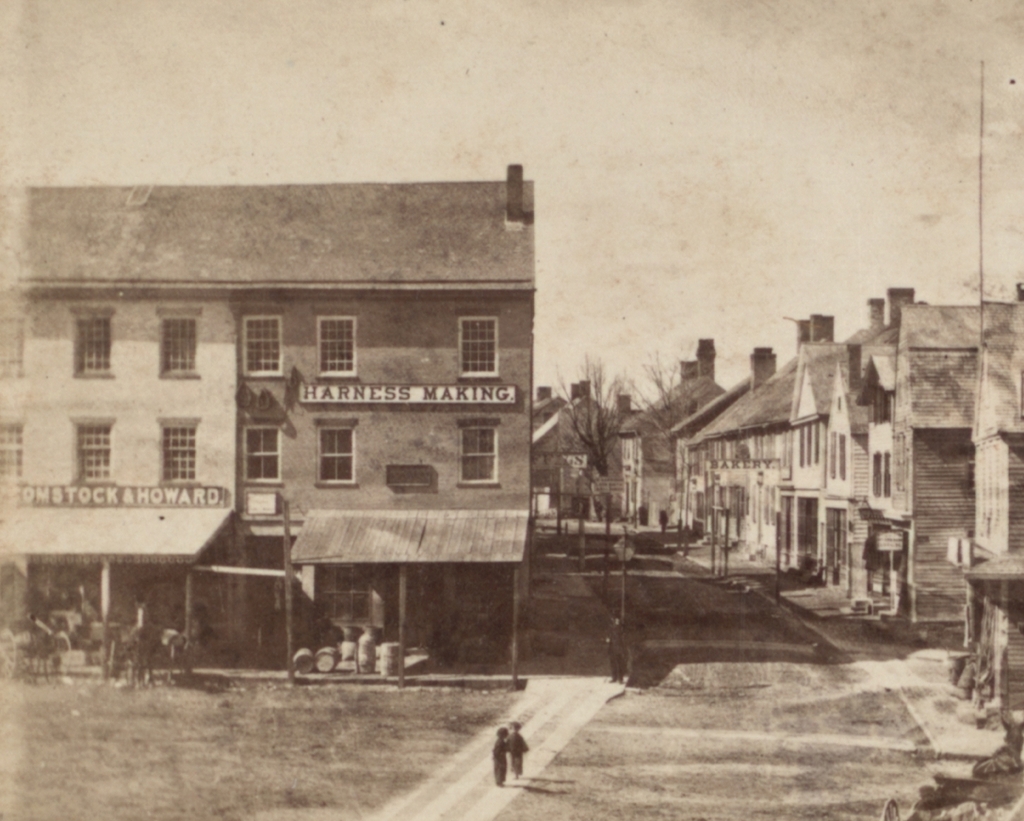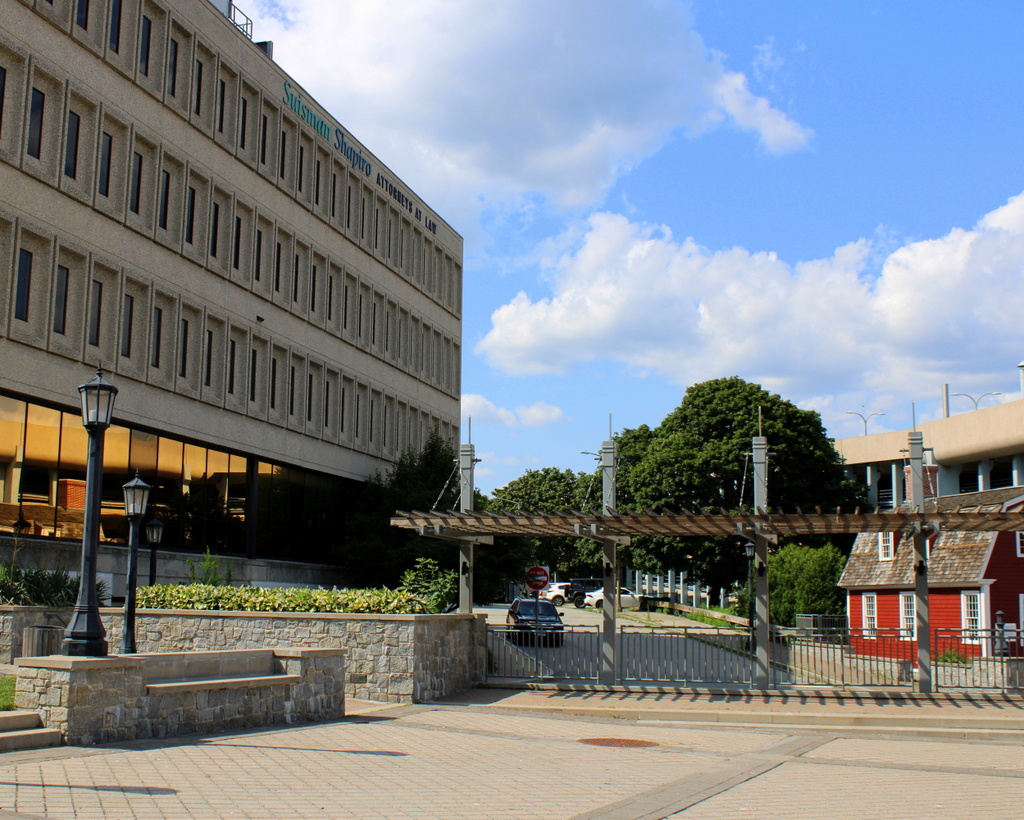The view looking north on Bradley Street from the corner of State Street in New London, around 1868. Image courtesy of the New York Public Library.
The scene in 2021:
During the 1800s, New London was an important seaport, in particular because of its role in the whaling industry. At one point, it was second only to New Bedford in terms of number of whaling ships, which brought significant prosperity to the city. However, like other major ports, New London also had its share of crime, poverty, and vice, and perhaps no street in the city better exemplified this than Bradley Street, which is shown in the first photo around 1868.
At the time, Bradley Street began here at State Street, and it ran northward parallel to Main Street for three blocks, before ending at Federal Street. The northern end of the street was predominantly residential, but the southern end, shown here in this scene, had an assortment of commercial buildings, mostly older wood-frame structures.
There are a few signs that are visible in the first photo, advertising for businesses such as a harness maker at the corner of State Street and a bakery further down Bradley Street. However, the street was better known for its less reputable establishments, particularly its saloons and brothels. As early as the 1840s, women were convicted for running “houses of ill fame” here on Bradley Street, and the street would remain the epicenter of the city’s red light district into the early 20th century. Even Eugene O’Neill, the prominent playwright, would patronize these brothels as a young man while spending summers with his family in New London, and he made reference to one of the madams, “Mamie Burns,” in his famous play Long Day’s Journey into Night.
By the turn of the 20th century, when O’Neill would have made his visits to Bradley Street, the street was predominantly the home of working class immigrants, particularly Polish and Jewish families. However, the relatively short street also had up to 13 saloons and four brothels in operation by 1910, as outlined by Dr. Matthew Berger in a 2021 blog post.
In an effort to overcome the street’s seedy reputation, it was eventually rebranded as North Bank Street around 1921. Then, around the 1960s it became Atlantic Street, and it was about this same time that all of the older buildings on the street were demolished as part of an urban renewal project. The street was also truncated so that it now ends after just one block, rather than continuing all the way to Federal Street. The result is a streetscape that looks more or less like every other urban renewal project of the 1960s, with a parking garage on one side and a vaguely brutalist office building on the other side.
However, there is one historic building that stands in the present-day scene. On the far right side in the foreground is the Nathan Hale Schoolhouse. It was built in 1773, and the famous Revolutionary War hero taught here from 1774 to 1775. This is not its original location, though. It has been moved six times over the past 250 years, most recently in 2009 when it was brought to its current location at the corner of what had once been Bradley Street.


